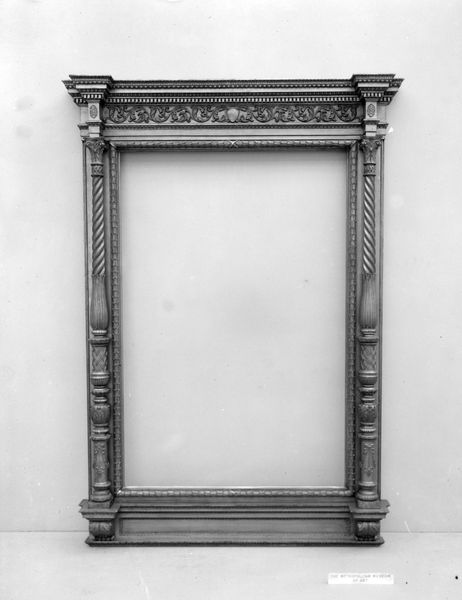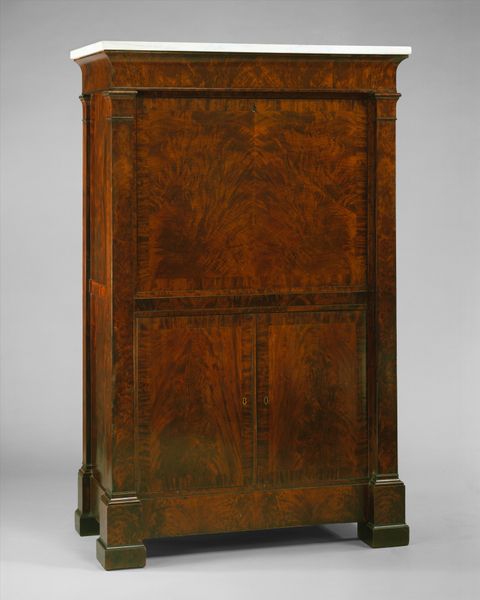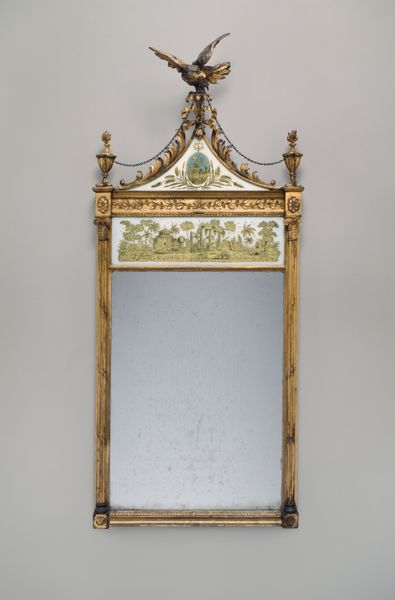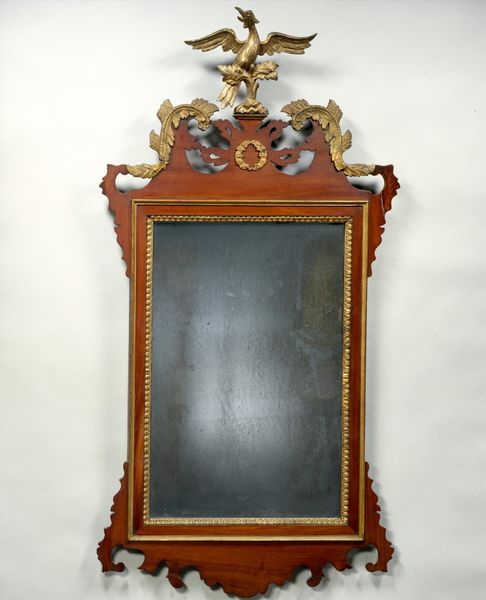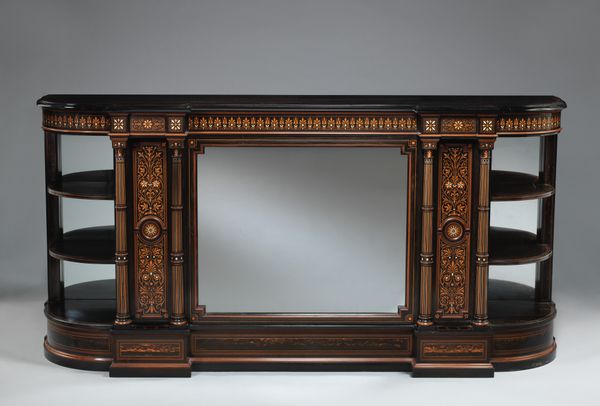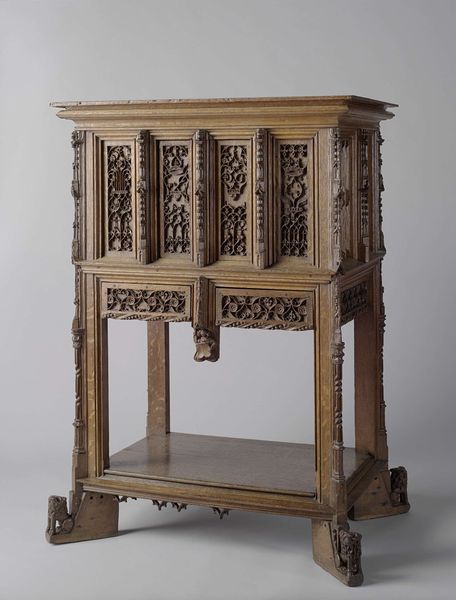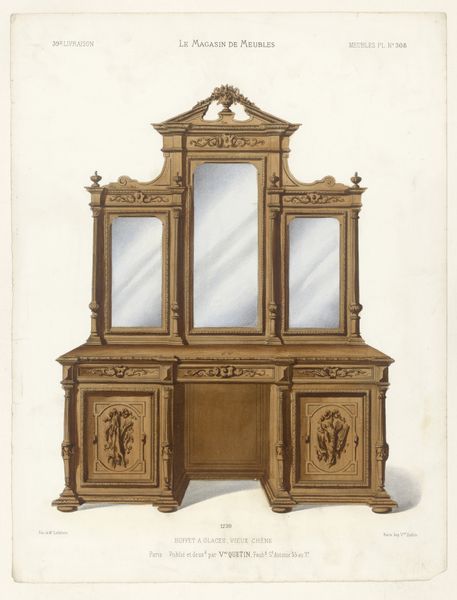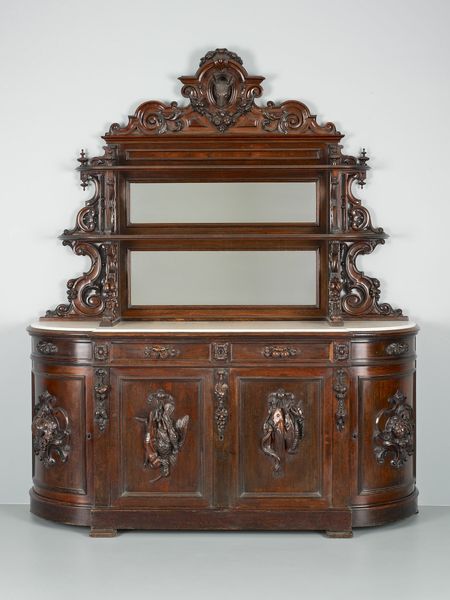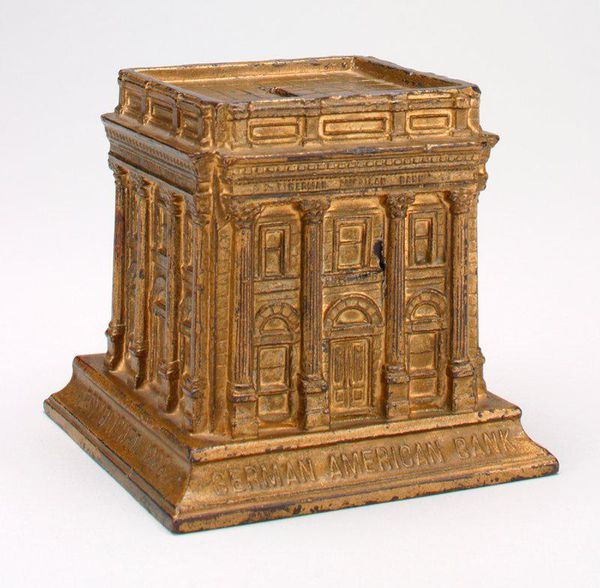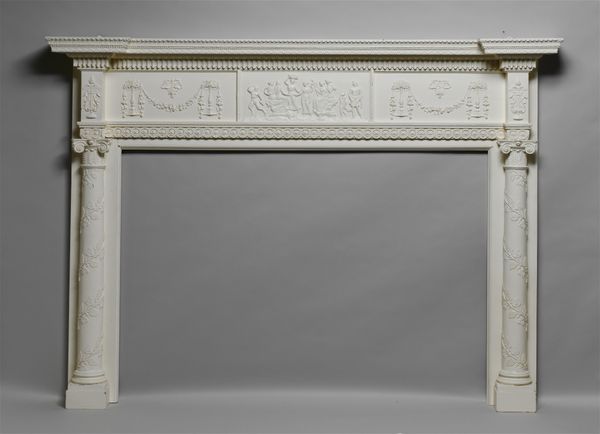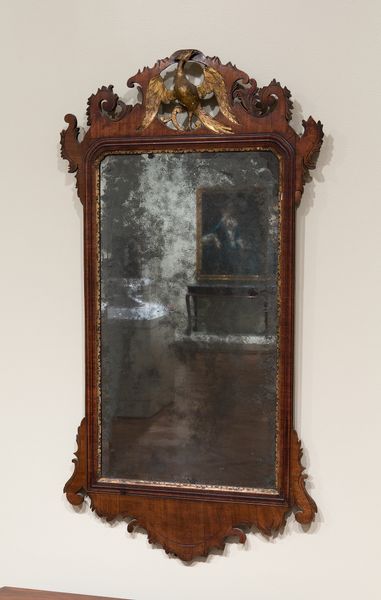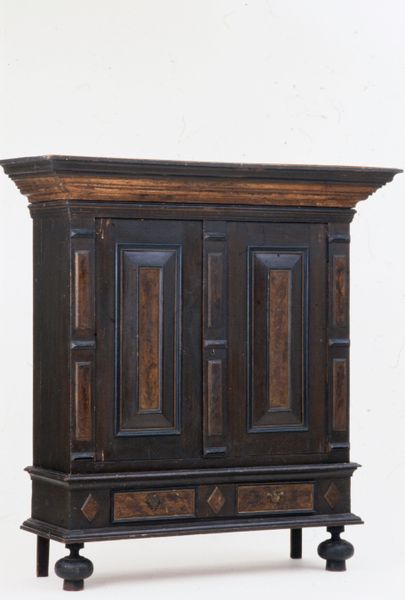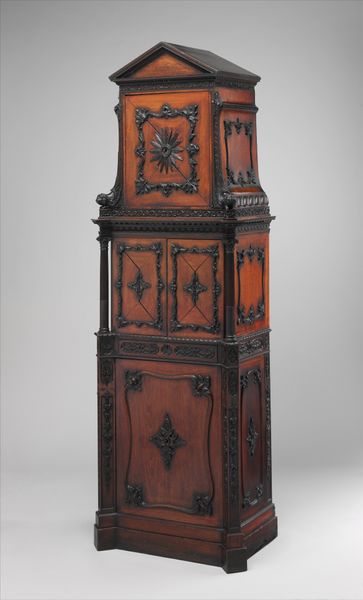
carving, sculpture, wood
#
wood texture
#
carving
#
sculpture
#
sculpture
#
wood
#
decorative-art
#
italian-renaissance
Dimensions: Overall: 29 1/2 × 14 9/16 in. (75 × 37 cm) Sight: 10 15/16 in. × 8 in. (27.8 × 20.3 cm) Rabbet: 11 7/8 × 8 11/16 in. (30.2 × 22.1 cm)
Copyright: Public Domain
Curator: It has such a raw, almost primitive quality despite its formal design. What are your first thoughts about this artwork? Editor: It does possess a certain roughness. Looking closely, the carving seems deliberately weighty and textured rather than polished and refined. Shall we enlighten our listeners? This tabernacle frame was crafted between 1527 and 1533, a splendid example of Italian Renaissance decorative art. It's currently held at the Metropolitan Museum of Art. Curator: Renaissance ideals heavily influenced its structure, of course, we can clearly see elements of classicism and humanism here. A wooden frame might seem simple, but its construction echoes that of a classical temple. How would you unpack this choice of medium in a Renaissance frame? Editor: Well, the artist, del Tasso, clearly emphasizes materiality. Look at the detailed wood carving! It’s layered and it possesses varied patinas, drawing our eye toward surface textures—knots, grains, even tool marks which celebrate process, texture, and depth rather than a pristine finish. This shifts how the viewer interprets the function, which is simply a surrounding, a containment. Curator: That texture wasn't accidental, the frame's construction mirrors contemporary social trends. Remember that guilds and workshops during the Renaissance emphasized artistry over mere craft—this piece makes clear a level of artistic license! Do you believe the naturalness is trying to push back against classical formalism? Editor: Not necessarily pushing back, but definitely complicating the visual language of the era. Though constructed with care, the tactile elements seem strategically incorporated. Think about the shadows that would’ve danced across this gilded and textured surface; the form is animated by light! Curator: You know, understanding that period sheds so much light on how the piece has been received in spaces such as the Met, but also throughout history. I would encourage listeners to learn more about where frames were displayed and how different eras may have found new meaning in art and the frames it possesses. Editor: It speaks of a dialogue across centuries, constantly renegotiating meanings via a rich engagement with surface, light, and form, to which a frame itself—a place where different styles find themselves— is extremely valuable. Thank you.
Comments
No comments
Be the first to comment and join the conversation on the ultimate creative platform.
